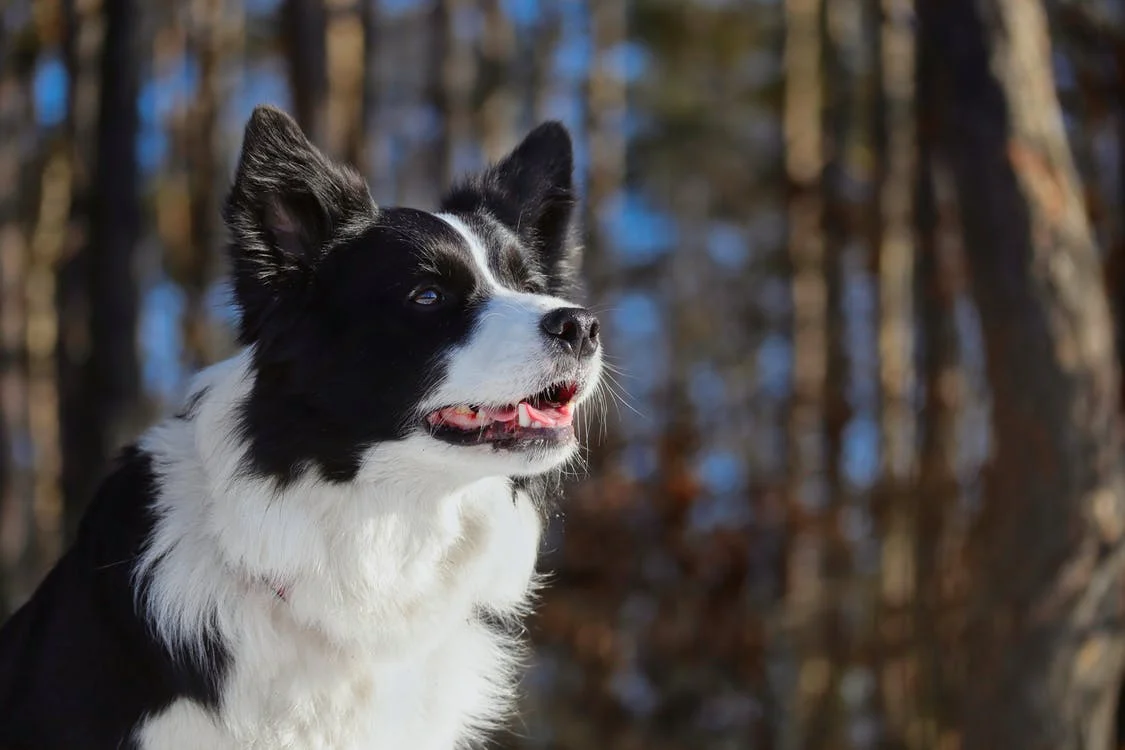Do Dogs See in Color or Black and White?
While it’s a common myth that dogs see in black and white, dogs do see colors. But, they don’t see colors in the same way that most humans do. Canines have what is called dichromatic vision. This means they see colors similarly to humans who have red-green color-blindness. Shades of yellow, orange, green and red will appear similar to a dog. In addition, some dogs are also near-sighted, or have other vision problems that affect how they see. This can be more common in some breeds than others.
How Dogs Eyes Work
Canine eyes have two types of color-sensing cones, while human eyes have three. These cones act as color receptors that go to the brain. The amount of cones in the eye causes them to view things similarly to humans who have color blindness. Certain colors may show up differently for dogs. For example, green and blue may both appear blue, and hues of orange and red may both appear brownish-red. Dogs may also have trouble differentiating between different hues of the same color, like light blue and dark blue. During the daytime, a dog’s visual acuity is 50% less than a human’s. However, their lack of sharp vision is compensated by their other senses, particularly the sense of smell. Depending on your dog’s breed, they may also have eyes set more on the side of their head, which allows them to have a wider range of vision.
Are Dogs Able To See in the Dark?
Many dog owners notice that their dogs seem to be more visually aware of objects than they are on their nighttime walks. Although their night vision is blurry, dogs have much better night vision than humans. While they have fewer color-sensing cones in their eyes, they have more of the light-sensing rods that allow them to see in dim lighting. Dogs evolved to be crepuscular, meaning they are more active at dawn and twilight. An increase in light-sensing rods likely allowed dogs to hunt and survive in the wild. Most dogs also have larger pupils and a third eye layer called the tapetum, made of reflective cells that further enhances their night vision. This reflective layer is what causes a dog’s eye to appear to be glowing yellow in photos taken with a camera flash.
Does Your Dog Have a Favorite Color?
While dogs see many colors as similar shades, they may prefer toys that have a higher contrast to the background. Red and green will both appear to your dog as similar shades of gray, while blue may look more distinct. Dogs have even been shown to perform better in agility courses when given blue obstacles. Pet stores market dog toys to human buyers, so the next time you think of buying toys in a rainbow of colors, consider that most of these colors look the same to your dog.
Vision Problems in Dogs
Dogs can develop vision problems due to genetics, illness, or age just like humans can. Certain breeds of dogs are more prone to vision problems than others. Symptoms of vision problems in dogs usually show up first in a change to the appearance of a dog’s eyes. Changes in appearance can include cloudiness, puffiness or inflammation. If you notice a difference with your dog’s eyes or vision, don’t hesitate to consult an online vet.

